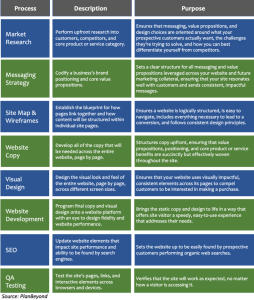
The demand for all things mobile is not only evident in today’s culture – it’s become indispensable. It’s sort of difficult to imagine a time when we didn’t have our mobile phones or tablets. How did we ever contact our loved ones? Or found directions to a fabulous restaurant? Mobile gadgets have transformed not only the way we live, but HOW we take in various types of information.
One of them is video.
How We Consume Video
Now, you don’t need to turn on your TV or go to the theatre to watch videos. And those wacky productions you did at home? You can upload them online to share with the world. It’s already commonplace to see people enjoying a video or two while commuting to work, sitting on a park bench, or when out with friends.
According to Business Insider, about 50 million people in the U.S. alone watches video on mobile devices. Meanwhile, fairly 40 percent of YouTube traffic comes from mobile – more than double their number compared to 2010 and 2012. Another interesting habit of mobile users is using their gadgets while watching television. Seems pretty odd, but they do this because they perform other activities (such as browse the Web, go on social media, shop online, etc.) even as they watch TV. Virtually 84 percent of folks put this into practice.
So it was only a matter of time before brands and digital marketers jumped into the bandwagon. In fact, we’ve already seen viral hits such as ‘Real Beauty Sketches’ from Dove and Budweiser’s ‘Puppy Love’. A lot of good brand campaigns are available not only on YouTube, but also on other popular sites such as Vimeo and Vine. Let’s not forget Twitter and Facebook as the top social media platforms for video content.
The question on marketer’s minds then is NOT whether or not one should invest on mobile video – but HOW to properly leverage this content to create a bigger impact with consumers.
Mobile Video Ads vs. Traditional Ads
When it comes to engaging audiences, nothing beats video. With its strong visuals combined with audio, it quickly grabs a person’s attention – and keeps it. Of course, it still depends on the type of content. But all in all, if you’re looking for a way to connect with your target market, boost brand awareness, and even increase sales, then investing on video is not a bad idea.
Believe it or not, but people actually like ads. Eton Digital studied Mashable’s Most Viewed Youtube Ads of 2010 and found several interesting points related to this statement:
- If the ad’s content is good (funny, entertaining, intriguing, etc.) enough, folks will happily watch it.
- Contrary to the notion that mobile users have short attention spans, longer video ads can get plenty of attention as long as it’s really good (please refer to point #1).
- Ads with content similar to what is originally trending on a video-sharing site have greater chances of succeeding. For example: YouTube viewers like folks who do stunts. Try to incorporate that into your ad so it doesn’t feel like one and it will resonate well with audiences.
- People LOVE anything that’s ‘outside-the-box’. Reminiscent of Tipp-Ex’s highly interactive 2010 YouTube ad that gained a lot of attention thanks to its humor and creativity.
If your potential consumers are millennials, then all the more reason to get into mobile video advertising. In a post by eMarketer, 18- to 34-year-olds said they found online ads the most influential. However, they tend to ignore traditional digital advertising gimmicks such as banner and social media ads, preferring something more interactive with substance.
Although mobile video seems like the more affordable, efficient method to target consumers, it still has similarities with traditional advertising such as TV commercials. For one, you still need to buy space to advertise (for TV it’s air time, for mobile it’s ad space). Prices will vary, of course. And for small business owners who cannot afford the large air time rates, mobile video campaigns are their best option to reach their audiences.
Perhaps one of the biggest drawbacks to traditional advertising is the lack of sufficient data to track progress. With online ads, all you need are the right digital tools – plus someone experienced to analyze that information – and you can get all kinds of facts: from brand recognition, user engagement, social media shares, number of views, and minutes watched to name just a few.
The TrueView Campaign

For businesses: wouldn’t it be nice if you were charged only when someone actually watches your video ad? Now, it’s possible. Thanks to YouTube’s TrueView ads, you pay ONLY when someone clicks or watches your ad. There are two types of TrueView campaigns to try: the In-Stream or In-Display.
In-Stream plays your ad before or during the actual video content. People will need to watch five seconds of the ad BEFORE getting the option to skip it or watch it. You will be charged if people watch at least 30 seconds of the video or until the end (whichever is less).
In-Display on the other hand, shows your ad along with other video content in YouTube search or on websites on the Google Display Network (depending on your set target audience). You will be charged if someone clicks and watches your ad.
Why TrueView Works
Unlike banner ads or Facebook cards, TrueView has grasped the importance of video in today’s mobile-driven world and strives to deliver a targeted approach where both parties (the advertiser and the target audience) are happy. TrueView campaigns are generally:
- budget-friendly
- great for case studies; and
- easy to track and measure
As long as you have a clear goal in mind, this mobile video ad campaign may just be what you need to boost your business.
If you’re already familiar with one of Google Analytics, then you’ll have no problems using TrueView. To get the most accurate data, don’t forget to use auto-tagging so that the results of your video ad campaign are correctly reflected in Analytics.
TrueView on TV?
Wondering whether or not to complement mobile video campaigns with TV ads? Reel SEO says it could be a winning combo. As online advertising is more budget-friendly, you can experiment with what works on digital mediums first before running a full commercial on TV. This saves you time, money, and effort because you already know what people like by then.
Don’t worry about showing duplicate content, either. IAB’s (Interactive Advertising Bureau) study says that people respond more to TV ads that they have previously seen online.
Best Video Practices for Mobile Ad Campaigns

Although marketers refer to this day as the ‘Golden Age’ of mobile video, plenty of businesses still hesitate on putting their bet on video ads. It’s not surprising that the most in demand content would also be the scariest thing to tackle for advertisers though. For one, the multitude of options may seem overwhelming to inexperienced marketers.
Aside from YouTube TrueView, there are in-game and in-app video ads. Social media platforms like Facebook also have their own offers when it comes to mobile video campaigns. There’s this fear that if you choose the wrong thing, you’ll end up losing not only revenue, but credibility.
The second biggest concern would be measurement. As mobile video ads can be highly customized to fit every target market as well as business objective, it can be confusing to know which types of data to really focus on. Businesses often wonder: ‘did my video increase brand awareness or sales?’
One thing that could help brands step into the future is to team up with experienced online marketers and data analysts. However, this poses the third issue: most companies are not willing to spend thousands of dollars to test ideas. Some are willing to just wing it and produce mediocre content simply to jump into the video bandwagon (or to repeat last year’s success). But the thing is, you won’t know the best ads for your business if you don’t experiment.
Mobile users consume videos differently than those on other devices. Testing what works is key if you want to maximize long-term gain for your video campaign. This is exactly what Google had in mind when they performed the ‘Unskippable Ads’ experiment.
Using Mountain Dew’s ‘Kickstart’ ad on YouTube (an already popular video ad with more than 9 million views to date), they edited it to come up with two other variants for testing on mobile users. The first one entitled ‘The Big Punch’, aims to display the brand as soon as the video starts rolling. The second video called ‘Pure Fun’ on the other hand, drops viewers in the middle of the fun part so they’re left feeling intrigued about what the content was all about.
The results of the experiment were highly interesting. For one, the ‘Pure Fun’ version received 26 percent higher views on mobile than the original ad and ‘The Big Punch’. Another surprising point was although ‘Pure Fun’ was longer (at 1 minute and 33 seconds), people still watched it.
What do these findings tell us as digital marketers?
- Using the same video from TV ads or desktop devices is NOT going to be as good on mobile.
- Given the opportunity to watch longer videos, people would grab it.
- Folks love watching fun, wacky, intriguing videos on mobile.
The most important discovery of all was that even the best or most successful video ads could be made better for mobile. It goes to show that modern online marketing techniques really frown upon ‘copy-paste’ strategies.
Therefore, when using video mobile ads, it’s crucial to customize it especially for mobile users and the way they consume content. Otherwise, you risk becoming one of the millions of video ads that are soon forgotten and shelved.
Grab The Opportunity Today
Videos will likely evolve into more responsive mediums in the years to come.
YouTube has already made positive changes to their TrueView campaigns by adding interactive cards instead of plain annotations. This allows publishers to place cards in their In-Stream video ads to encourage online users to take desired action. This could be to know more about the product, go to the company’s website, or find related content. The best part is that these cards are also viewable on mobile devices.
There’s definitely plenty of potential in video content. For businesses who wish to try TrueView – or another video marketing strategy – but are still hesitant about it, get in touch with professional digital marketing services in your area immediately for more information. You wouldn’t want to miss the biggest thing to hit small screens.
(257)





